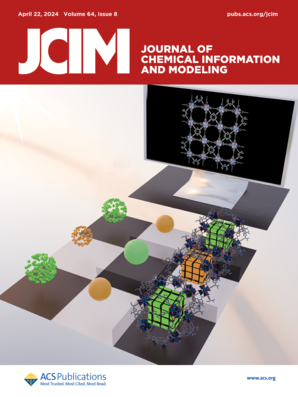Accurate Conformation Sampling via Protein Structural Diffusion
IF 5.3
2区 化学
Q1 CHEMISTRY, MEDICINAL
引用次数: 0
Abstract
Accurate sampling of protein conformations is pivotal for advances in biology and medicine. Although there has been tremendous progress in protein structure prediction in recent years due to deep learning, models that can predict the different stable conformations of proteins with high accuracy and structural validity are still lacking. Here, we introduce UFConf, a cutting-edge approach designed for robust sampling of diverse protein conformations based solely on amino acid sequences. This method transforms AlphaFold2 into a diffusion model by implementing a conformation-based diffusion process and adapting the architecture to process diffused inputs effectively. To counteract the inherent conformational bias in the Protein Data Bank, we developed a novel hierarchical reweighting protocol based on structural clustering. Our evaluations demonstrate that UFConf outperforms existing methods in terms of successful sampling and structural validity. The comparisons with long-time molecular dynamics show that UFConf can overcome the energy barrier existing in molecular dynamics simulations and perform more efficient sampling. Furthermore, We showcase UFConf’s utility in drug discovery through its application in neural protein–ligand docking. In a blind test, it accurately predicted a novel protein–ligand complex, underscoring its potential to impact real-world biological research. Additionally, we present other modes of sampling using UFConf, including partial sampling with fixed motif, Langevin dynamics, and structural interpolation.

通过蛋白质结构扩散进行精确构象采样
蛋白质构象的准确采样对于生物学和医学的发展至关重要。虽然近年来深度学习在蛋白质结构预测方面取得了巨大进步,但目前仍缺乏能预测蛋白质不同稳定构象的高准确性和结构有效性的模型。在此,我们介绍 UFConf,这是一种仅基于氨基酸序列就能对不同蛋白质构象进行稳健采样的前沿方法。该方法通过实施基于构象的扩散过程和调整结构来有效处理扩散输入,从而将 AlphaFold2 转化为扩散模型。为了抵消蛋白质数据库中固有的构象偏差,我们开发了一种基于结构聚类的新型分层再加权协议。评估结果表明,UFConf 在成功采样和结构有效性方面优于现有方法。与长时分子动力学的比较表明,UFConf 可以克服分子动力学模拟中存在的能量障碍,并执行更高效的采样。此外,我们还通过在神经蛋白质配体对接中的应用,展示了 UFConf 在药物发现中的实用性。在一次盲测中,它准确预测了一种新的蛋白质配体复合物,这凸显了其影响现实世界生物研究的潜力。此外,我们还介绍了使用 UFConf 进行采样的其他模式,包括固定图案的部分采样、朗格文动力学和结构插值。
本文章由计算机程序翻译,如有差异,请以英文原文为准。
求助全文
约1分钟内获得全文
求助全文
来源期刊
CiteScore
9.80
自引率
10.70%
发文量
529
审稿时长
1.4 months
期刊介绍:
The Journal of Chemical Information and Modeling publishes papers reporting new methodology and/or important applications in the fields of chemical informatics and molecular modeling. Specific topics include the representation and computer-based searching of chemical databases, molecular modeling, computer-aided molecular design of new materials, catalysts, or ligands, development of new computational methods or efficient algorithms for chemical software, and biopharmaceutical chemistry including analyses of biological activity and other issues related to drug discovery.
Astute chemists, computer scientists, and information specialists look to this monthly’s insightful research studies, programming innovations, and software reviews to keep current with advances in this integral, multidisciplinary field.
As a subscriber you’ll stay abreast of database search systems, use of graph theory in chemical problems, substructure search systems, pattern recognition and clustering, analysis of chemical and physical data, molecular modeling, graphics and natural language interfaces, bibliometric and citation analysis, and synthesis design and reactions databases.

 求助内容:
求助内容: 应助结果提醒方式:
应助结果提醒方式:


